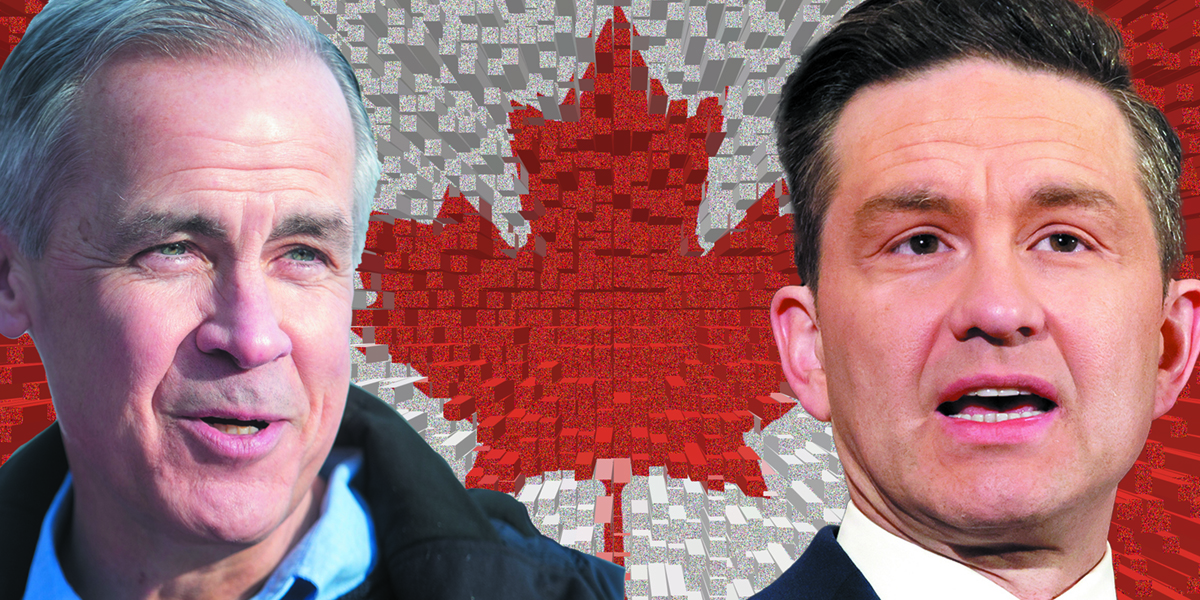Grits go-getters in digital election ads, overtaking Tory pre-writ lead on Meta spending

The incumbent Liberals flew off the digital starting line the day the writ dropped with a six-figure ad-buy on Meta, outspending their Conservative challengers by more than 14-to-1. And while the Tories dropped more than half a million dollars the week before March 23, digital marketing strategist Harneet Singh says they’ll need to keep their foot on the gas, or risk being overtaken in more than just spending.
Singh, a managing principal at EOK Consults, told The Hill Times that while the Liberals had previously seemed to struggle to find a message or maintain an effective presence online, their new digital team “is doing everything right.”
While the Conservatives have been lapping the Liberals on digital advertising for over two years, the Grits recaptured the advantage in the first few days of the election “because they’re the ones calling it,” Singh said.
According to Meta’s Ad Library, on March 23—the day the election officially began—the incumbent Liberals spent a combined $118,922 on Facebook and Instagram advertising, just over 14 times more than the opposition Conservatives’ $8,354 across their respective official party and leaders’ accounts.
The Liberals’ allocation of their total spending is also the inverse of the Conservatives’ recent strategy of consolidating the vast majority through their official page. More than half—$82,388—of the Liberal spend was directed through Prime Minister Mark Carney’s page. At the same time, only $395 was spent on Conservative Leader Pierre Poilievre’s official page—less than five per cent of the total Tory spend.
In the preceding week—March 16-22—the Conservatives spent well over $563,000 on Meta Ads, compared to the Grits’ $250,000, representing a larger total than either spent in a single month since The Hill Times began tracking the data last September.

However, combining the totals across all eight days, Singh noted that the Liberals have been able to target their ads to precede Carney’s leadership tour more strategically.

Singh noted that the heaviest spending during the pre-election and on writ-day focused heavily on postal codes surrounding Carney’s first campaign stops in Newfoundland and Labrador, Nova Scotia, Ontario, and Quebec. He also said that the Liberals are doing much more detailed targeting based on audience interests and behaviours, particularly those focusing on “first-time home buyers, universal health care, dental care, education, and social change.”
“The Liberals are doing way better at targeting than they’ve done in recent years,” Singh noted, adding they seemed to have improved on—or at least learned lessons from—their provincial counterparts during the recent Ontario election.
During the February provincial election, the Ontario Liberals spent $1.4-million on Meta alone—approximately 66 per cent of the total election spending on the platform, according to EOK tracking. The party ultimately secured five more seats for a total of 14 seats, and more than 1.5 million votes. Singh suggested the digital strategy, given that outcome, suggests Liberal advertising wasn’t as efficient or targeted as it could have been.
Meanwhile, Ontario Premier Doug Ford’s Progressive Conservatives spent $305,500 to add one seat to their 79-member team, and pulled over 2.15 million votes, followed by NDP Leader Marit Stiles, who spent $271,700, and lost one seat for a total of 27 seats, and capturing 931,796 votes.
In contrast, Singh said that while the federal Liberals have expanded their reach and improved their aim, the Conservatives seem to be easing up on their rapid-fire digital advertising approach while targeting a broader audience.
As of March 26, the Liberals’ official page had 53 advertisements across 1,400 active placements on Meta, and 83 advertisements across over 400 placements through Carney’s official page. In comparison, the Conservatives’ official page has 19 ads across 700 active placements, and only three on Poilievre’s page advertising his rallies in Quebec on March 26, as well as in Surrey, B.C., on March 27, and Winnipeg, Man., on March 29.
Beyond the regular spending on vote-rich ridings and regions—like Brampton, Ont., the Greater Toronto Area, British Columbia, and Quebec—Singh explained that the only attempt at hyper-targeting he sees are the Conservatives’ two Punjabi- and Mandarin-language ads.
“The only reason I can believe that’s a smart play is that they just want to drive the momentum to the campaign events,” Singh explained. “They don’t care about who comes to the event as long as they show up.
Singh said that the historic fundraising totals the Conservatives have achieved since Poilievre became party leader in 2022 provided plenty of fuel for the party during the pre-writ period, but they still can’t afford to take their foot off the gas if they hope to reach the younger voters they’ll need to win.

“This campaign period is already contentious, short, and the weather in most cities is still not conducive to canvassing,” Singh explained, adding that while the Liberals can reach more of their older voters on traditional platforms, the Conservatives still need digital.

“We’re expecting some individual candidates to spend a record amount of money on ads for their campaigns,” Singh told The Hill Times, noting he had already observed several Liberal and Conservative candidates who had spent between $6,000 to 9,000 during the pre-writ week.
Election expenses—which include a wide range of activities from advertising, polling, transportation, and staffing—are calculated by multiplying the number of electors in a given riding by $0.735 plus an adjustment for inflation, with increases for campaigns lasting longer than 37 days.
According to Elections Canada’s estimates, released on Nov. 15, of the newly redistributed electoral map, the riding with the highest candidate spending limit is North Island-Powell River, B.C., with a limit of $180,758, while Charlottetown, P.E.I., has the lowest with a limit of $139,836.
Federal parties’ expenses are determined using the same formula with the limit reflecting the total amount in each riding where the party has endorsed a candidate. Based on Elections Canada’s preliminary estimates, a party that has endorsed a candidate in all 343 ridings would be eligible to spend a maximum of $35.2-million.
During the 44th general election in 2021, the Liberals and NDP received the maximum spending limit of $30.1-million for their 338 candidates, followed closely by the Conservatives at $30.04-million with 337 candidates. The People’s Party of Canada received the next highest, $27.87-million, followed by the Green Party with $22.58-million. The Bloc Québécois, which only endorses candidates in a single province’s ridings, had the lowest spending limit at $7.16-million.
Third-party spending is also regulated during elections, with a limit of $5,166 per riding, but an overall limit of $602,700.
The Hill Times






 LICENSING
LICENSING PODCAST
PODCAST ALERTS
ALERTS













